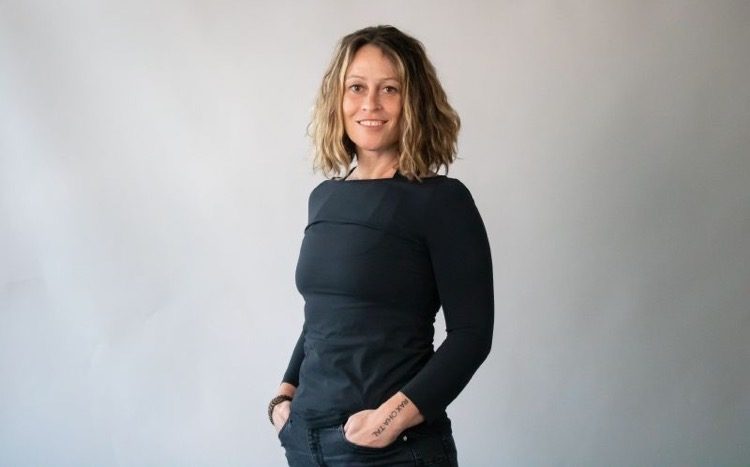Q&A with Drea Burbank is an MD-technologist and founder/CEO of Savimbo which sells fair-trade carbon credits. Drea lives in the Colombian Amazon.
| Can carbon and biodiversity credits truly benefit Indigenous peoples and local communities? What are the necessary conditions for ensuring their effective benefit?
Yes, they definitely can. Primarily because, despite their flaws, these are payment mechanisms for intact ecosystems. Nation-state funding is not reaching forests like the Amazon and Congo because of corrupt regional governments. But also because these governments don’t actually control forests. Indigenous Peoples and local communities do, and our funding mechanisms are not designed to reach or reward them where it matters.
The most effective way to benefit Indigenous and local communities is to structure payments that are outcome-based and monitoring, reporting, verification (MRV)-driven. We need to include land tenure in payments, use distributed direct payment mechanisms (microfinance), shorten contract length to one year (our biodiversity methodology and the PACT framework), shorten payment cycles, provide catalytic capital to communities, and skip certification bodies that are adding no value in favor of MRV-driven auditing, among other things.
| There is an ongoing debate regarding the differentiation between Indigenous peoples and local communities, particularly in terms of legal considerations. Drawing from your firsthand experience, could you elaborate on this discussion?
Yes. Can’t conflate them anymore. We work with both, and it’s dangerous to think this is about ethnicity, which is quite heterogeneous. It isn’t. It’s about sovereign territory. Indigenous lands are equal to nation-states in negotiating power and have international law protecting them. Local communities are often the poor within nation-states. Conflating them removes nation-level negotiating power from Indigenous groups and increases their risk from contracts that erode their land rights. Indigenous peoples often believe that land can’t be owned; this has profound implications within their borders for how funds are distributed, class in society, and how decisions are made. Small farmers, on the other hand, often have small plots of owned land, are single decision-makers, often are lower class within nations, and often have heterogeneous behaviors toward conservation.
We tell all our Indigenous leaders to force their partners to simplify it to mangos vs. palm trees. In other words, are they trying to buy your mangos? The positive byproducts of a healthy forest like agrobiodiversity crops, or nature commodities like carbon credits, biodiversity credits, etc. Or are they trying to buy your tree: rights to your land, all future nature data, water, all the biodiversity credits your territories produce, etc.? All the mangoes the tree produces.
| Nature as an asset class presents opportunities to address the biodiversity funding gap and meet the targets outlined in the Global Biodiversity Framework through Nature-based Solutions. However, when indigenous peoples and local communities are stakeholders, there are potential challenges. What are these pitfalls, and what strategies can be employed to mitigate them?
We’re very, very careful about assets. This term is misleading depending on the discipline. From an accounting discipline, it means a “positive” on the balance sheet. In other contexts, it means “I own some rights to your land, family, animals, company, future.” We tell all our Indigenous leaders to force their partners to simplify it to mangos vs. palm trees.
In other words, are they trying to buy your mangos? The positive byproducts of a healthy forest like agrobiodiversity crops, or nature commodities like carbon credits, biodiversity credits, etc.
Or are they trying to buy your tree: rights to your land, all future nature data, water, all the biodiversity credits your territories produce, etc.? All the mangoes the tree produces.
People would like to obscure this difference, but that’s usually to the benefit of the industrialized world that maintains systems of class, social hierarchy, and economic colonialism via asset ownership. Stocks/assets/and bonds are things that can transact on the New York Stock Exchange. They maintain institutional wealth and multigenerational class structures. Commodities like oil, carbon credits, and agricultural crops transact on commodities exchanges like the Chicago Mercantile Exchange. They are commerce, but they are used and expire.
We educate leaders on the difference and tell them to NEVER sell their trees. At Savimbo, we’re only in the fair-trade mango business for nature-based products of healthy forests. That’s conscious business and fair-trade with Indigenous groups that respects their unique governance structures.
At the end of the day, Indigenous people live in very different paradigms. For them to have healthy funding, they need something they can exchange for positive outcomes that doesn’t erode their values or require too many intermediaries to measure.
| brief bio
Drea Burbank is an MD-technologist and founder/CEO of Savimbo which sells fair-trade carbon credits. Drea lives in the Colombian Amazon. Her international team of 300+ delinquent savants hacks carbon markets to support jungle smallfarmers who conserve and reforest. She’s addicted to yoga, passionate about creation, and prone to profanity or poetry — sometimes both.
| about
Savimbo does fair-trade carbon credits. No middlemen. We pay smallfarmers in tropical forests to replant and conserve, then resell their service in the form of carbon credits. We’re a B-corp. Our nonprofit arm does land-rights, literacy, and living conditions.
| All opinions expressed are those of the author and/or quoted sources. investESG.eu is an independent and neutral platform dedicated to generating debate around ESG investing topics.









